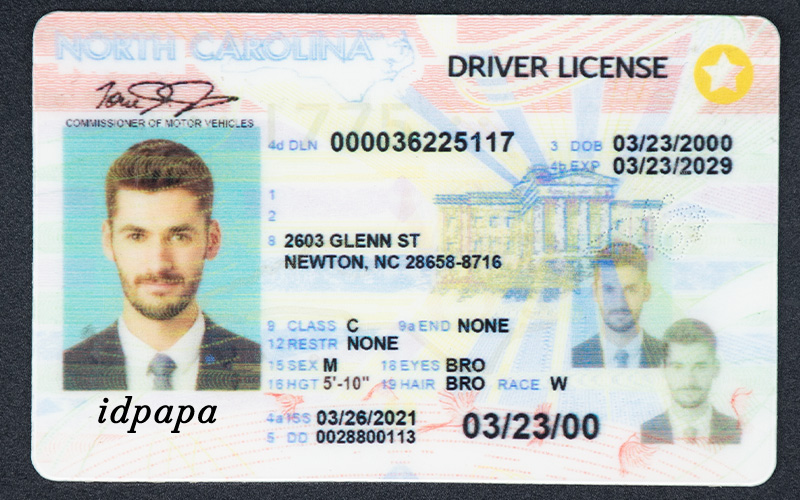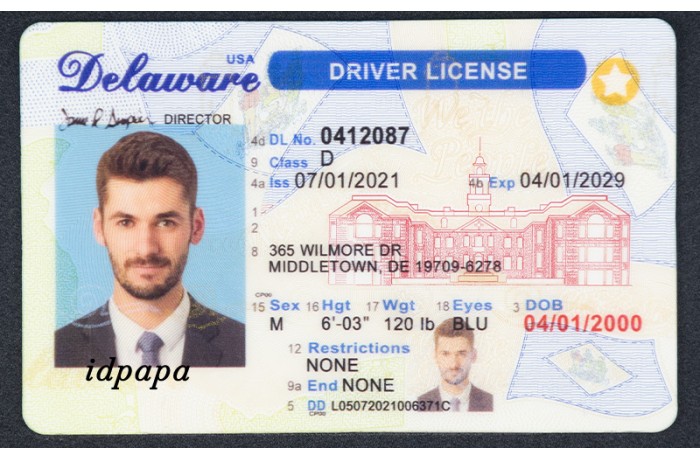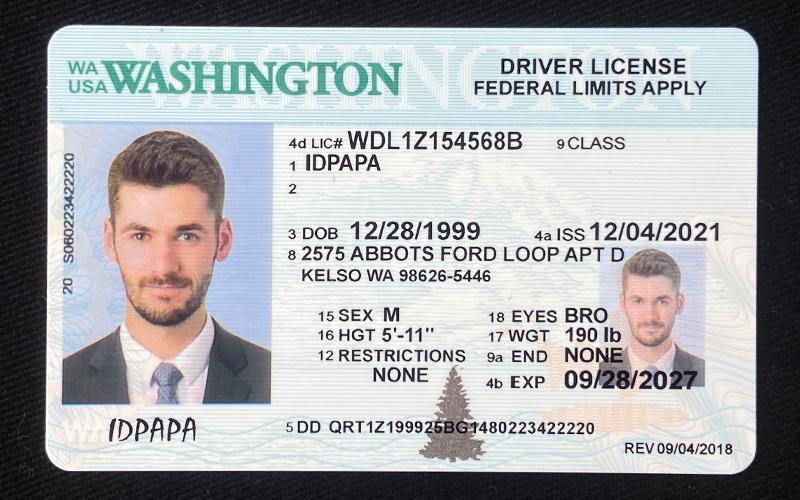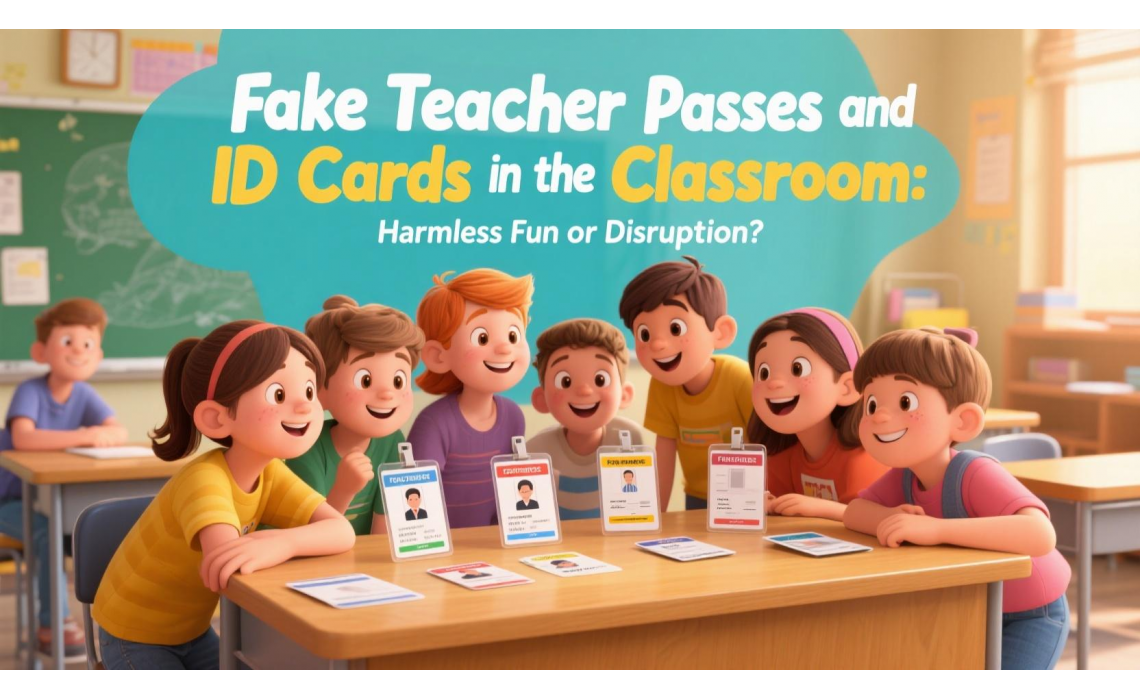Fake Teacher Passes and ID Cards in the Classroom: Harmless Fun or Disruption?
Fake Teacher Passes and ID Cards in the Classroom: Harmless Fun or Disruption?

Sample North Carolina Driver License showing standard elements like a yellow star, Class D license, ghost image, and IDPapa watermark—used for novelty or demo purposes.
In an age of creative expression, meme humor, and classroom chaos, fake teacher passes and novelty ID cards have surged in popularity among students. Whether it’s a “Hallway Surveillance Officer” badge or a custom “Principal-in-Training” pass, these props walk the line between harmless fun and potential disruption.
But what do they represent? Is this a playful way to build camaraderie and student identity, or a growing distraction that undermines school systems and authority? The conversation is more nuanced than it seems.
The Emergence of Classroom Identity Play
Generation Z has mastered the art of personalization. From gamertags to TikTok handles, identity is no longer static—it’s modular. It’s no surprise, then, that schools, once rigid spaces of structure, are being reimagined through student-generated roles.
Students are now creating custom ID cards that mimic real staff badges or official-looking hall passes. With titles like:
●“Assistant to the Substitute”
●“Cafeteria Line Monitor”
●“Fire Drill Coordinator”
●“Honorary Homework Exemption Officer.”These novelty cards have found their way into backpacks, lockers, and yes, hallways.
And they’re not poorly made. Many feature real-school emblems, barcodes, photos, and laminated finishes that mimic authentic credentials, though the job titles are often hilariously absurd.
Browse popular items in the IDPapa Shop or get started at Start Your Order Now.
Harmless Roleplay or Hidden Undermining?
The classroom has always been a space where hierarchy matters—teachers lead, students follow. But novelty ID culture flips that script, letting students assign themselves fictional power.
When used correctly, these props serve as tools of creative expression and harmless fun. They let students form clubs, create games, and build community. For example, a study group might give each member an ID with a fake title—“Chief Equation Solver” or “Essay Enforcer.”
But in some cases, they’ve caused tension. Students may use fake teacher passes to roam halls, skip classes, or impersonate aides, leading to administrative headaches. What begins as a joke can spiral into real consequences.
See how others evaluate risk and quality in: Fake ID Review
School Staff Reactions: Between Laughs and Limits
Teachers and school administrators are split. Some see it as a way to engage students, especially when IDs are tied to club roles or reward systems. Others view it as a threat to order, especially when passes are used to leave classrooms under pretenses.
In some cases, schools have had to issue official policies banning fake passes. But in others, they’ve embraced the trend—offering supervised opportunities to create funny but structured identity cards during spirit weeks or school events.
This duality begs the question: Are novelty teacher IDs the new student expression, or just another classroom management issue?
For how others get inspiration, check: Blogs on ID Trends
Why Students Love Fake Titles
The allure isn’t just about leaving class unnoticed. It’s about imagination, role-play, and status. When a student carries a card that says “Assistant Dean of Swag,” they’re not just being funny—they’re tapping into group dynamics and social hierarchy.
These IDs allow students to perform different versions of themselves—sometimes confident, sometimes hilarious, sometimes in charge. They give young people control over their identity in a world that often tells them who they’re supposed to be.
And yes, some of them are just meme-level ridiculous:
●“WiFi Monitor”
●“Security Liaison for the Snack Drawer”
●“Advanced Distraction Specialist”
These cards are part badge, part inside joke.
Start designing your own set: Order Now

The Hall Pass Game: A Culture of Outsmarting
In some schools, students have created an underground hall pass culture, where novelty cards are exchanged or collected like Pokémon cards. Each one grants “fake permission” to move freely, even if unofficially.
This has led to classroom disruptions, blurred lines between real and fake, and an escalating need for teacher awareness. But it’s also become a clever game of wits—a modern cat-and-mouse dynamic between administration and students.
Some schools are now using software to track movements and scan real IDs. But students, ever creative, respond with QR-coded novelty cards, hologram stickers, and role-specific designs.
See how quality novelty cards are made to mimic realism:
When Class Projects Turn Creative
Not all novelty IDs disrupt—some enhance learning. In creative writing classes, students invent characters and design matching ID cards. In mock governments or student-run businesses, cards help legitimize roles.
Educators who embrace this form of identity building often report higher engagement, stronger group dynamics, and memorable presentations. Students feel seen. They feel like their invented roles matter.
And when does the joke become part of the lesson plan? Everyone wins.
Check out ideas in: The Memeification of Authority
Digital Classrooms and Identity Reinvention
Even in remote or hybrid settings, fake IDs are thriving. Students customize virtual backgrounds to include fake badges. Clubs use them in Zoom meetings to assign roles during games or brainstorming sessions.
The transition to digital learning didn’t kill ID play—it expanded it. Students now share custom cards via Google Slides, Canva, or email attachments. Teachers create “Student of the Week” awards with novelty titles like:
●“Google Meet Gladiator”
●“Mute Button Maestro”
●“Breakout Room Boss”
The flexibility of fake IDs continues to adapt to modern classrooms.
Need help submitting ID photos? Use the Photo Submission Guide
Educator Responses: Case Studies from the Field
In California, a middle school reported reduced hallway infractions after incorporating novelty IDs into a reward system. Students who followed rules got fun job titles and limited “hallway privileges” tied to their new roles.
In Ohio, a high school banned novelty IDs after students impersonated assistants and created confusion during an emergency drill.
In Texas, a teacher used fake ID kits to encourage debate in civics class—students had to argue for or against policies using roles like “Fake News Analyst” or “Digital Rights Advocate.”
Each school is writing its chapter in this growing cultural movement.
To view customer testimonials, visit: Customer Reviews & Product Tests
Navigating the Line: What Makes It Harmless?
It comes down to intent and context. If students are using fake passes as props, jokes, or part of a structured event, they add value. If they’re using them to skip class, manipulate rules, or mislead staff—it’s time for a boundary.
Teachers can maintain authority while still allowing students to express themselves. It’s about creative balance.
Want to explore different ID types?
Visit: All Fake ID Products & Types

Final Thoughts: Joke or Identity Tool?
In the classroom, a fake ID can be a harmless joke, a team-building tool, or a rule-bending distraction—depending on how it's used. But one thing is clear: young people are craving more say in who they are, and these novelty roles give them just that.
When used with creativity and accountability, fake teacher passes and ID cards are more than pranks. They’re badges of belonging, tokens of personality, and artifacts of a generation that’s rewriting the rules on identity.
Learn more at:
And when you're ready to start your collection or run a classroom activity that makes learning personal:
![]() Start Your Order Now
Start Your Order Now
Because sometimes, the best lessons come with a badge.


